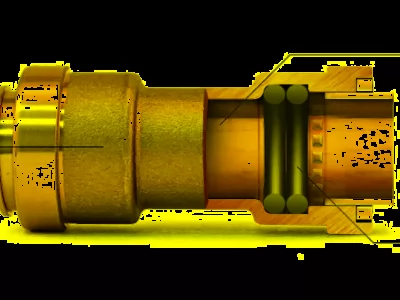What is a process map?
The aspect of process mapping in a company or organisation is considered during the elaboration of its corporate strategic plan, in order to know better and more deeply the functioning and performance of the processes and activities in which it is involved, paying special attention to those key aspects of them.
A process map is defined graphically, in what is known as value diagrams, combining the global perspective of the company with the local perspectives of the respective department in which each process is registered. Its development, therefore, must try to agree on the local position and the concrete performance of each process in question with corporate strategic purposes, so it is essential to identify them and rank them according to their specific definition.
We recommend the use of process mapping software to systematize its use among all workers and thus identify the interrelationships of each of the large blocks (strategic, operational and support).
Process mapping: defining the processes of a company
Broadly speaking, we can identify 3 types of processes in any company or organisation. Consequently, the definition of the corresponding process maps should be adapted to the peculiarities of each case:
Strategic process: its definition corresponds to management and management positions, and mainly deals with processes of great strategic importance that condition the definition and consideration of other processes and activities in order to offer support for making sound decisions, strengthen the operation of the business, and contribute to improving the client’s perspective.
Key process: they add value to the relationship of the company or organisation with its customers and users, pursuing the main purpose of satisfying their needs. In this type of process, we find, for example, those involved in the design, planning, and supervision of the commercial strategy, supply chains, and logistics projects, among others. The development and definition of the process map for this typology must be done in a particularly meticulous way, identifying each process at the end point of its route (the provision of the service or product to the client), and tracing in a reverse direction to its starting point, indicating tasks, activities and subprocesses that directly or indirectly depend on it.
Complementary process: also called a support process, these complement the previously defined processes. Despite being minor processes from a strategic and corporate point of view, they greatly condition the performance of superior processes and in many cases determine the success or failure of them. The activities and processes related to the supply of raw materials, tools, applications, and computer equipment or the training of personnel are some examples that fit into this category.
Process mapping ISO 9001
The definition of a quality process map of a company culminates in the preparation of a file for each identified process in which the key aspects are related to the main elements that comprise it; the establishment of performance indicators that allow monitoring and evaluation, and a diagram that places it corresponding to importance, specific weight and strategic relevance within the overall corporate framework. All of this is based on the ISO 9001 quality standard, which is why it can also commonly be called the 9001-process map.
Process mapping: reasons to do it
Once the types of process maps that exist are appreciated, it is time to see how process mapping can help an organisation achieve its objectives:
- It helps to define a coherent structure of the organisation, establishing at all times the hierarchy in it.
- It is a good tool to analyse the processes, helping to increase the quality and/or reduce the cycle of time.
- It helps to evaluate the effectiveness and efficiency in each of the processes from an internal and external point of view.
- It is a good way to see who is in charge of the process that should ensure compliance.
- It allows to know the current state of the company and use it as a starting point to implement improvements, both at a general level and in specific departments or areas.
- It helps to perform an in-depth analysis of the tasks performed by each worker, thus detecting inefficiencies or personnel needs in each of the processes.
- It is a good way to guide new employees and collaborators.
- A greater adaptability and flexibility is achieved before change is implemented.
- It is a good way to develop alternative ways of doing work in pursuit of business efficiency.
Is your organisation ready to become leaner and more focused? Greater efficiency, flexibility, and control are just some of the benefits your business could enjoy if you implement process management successfully.
Image : Designed by Bearfotos / Freepik











Comments